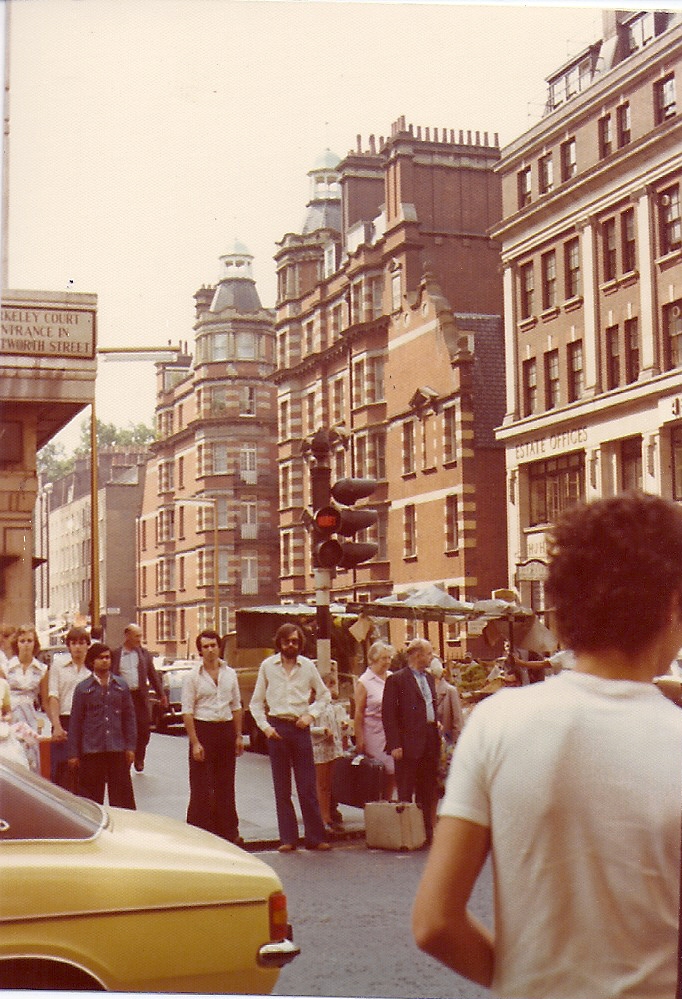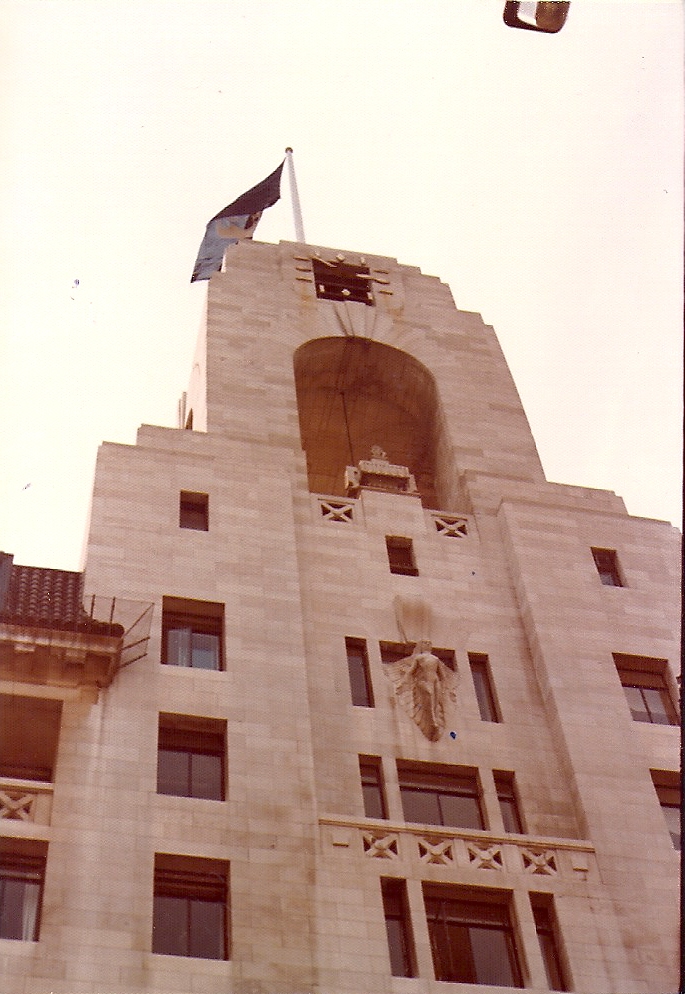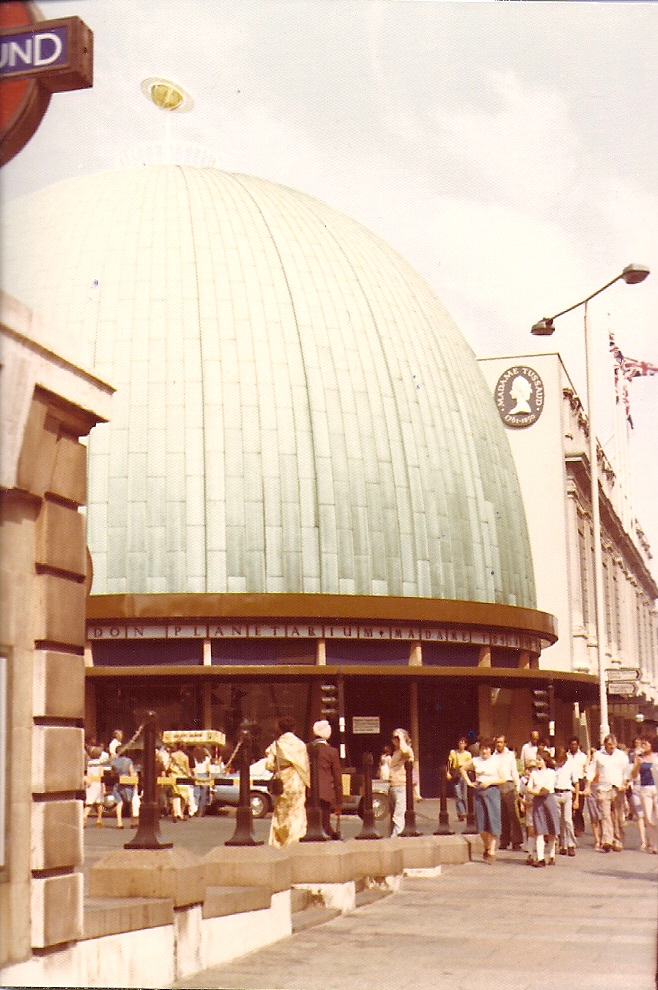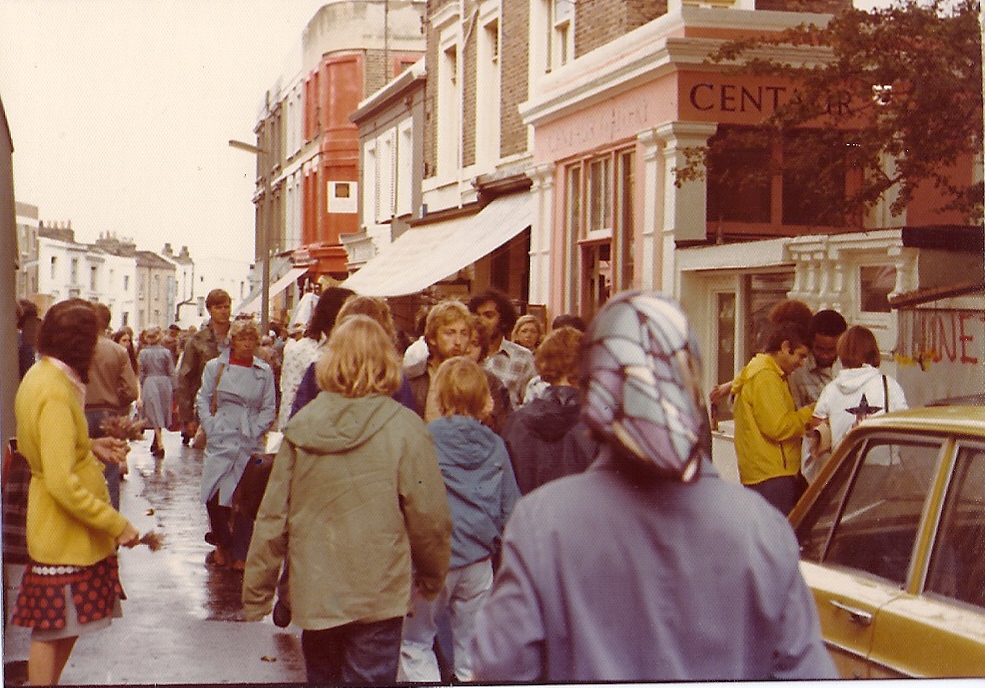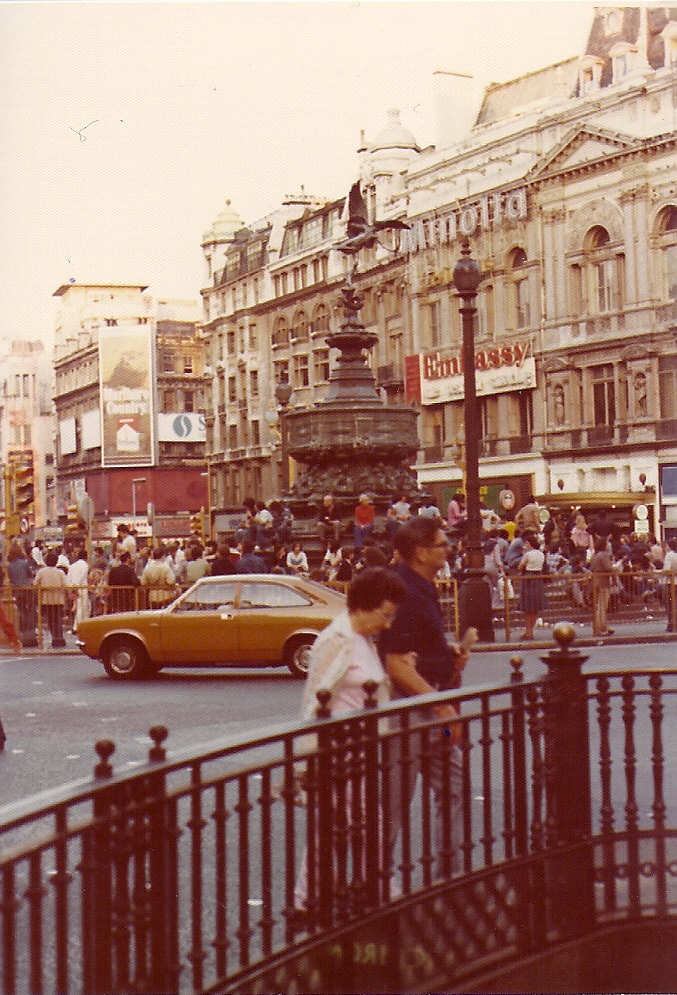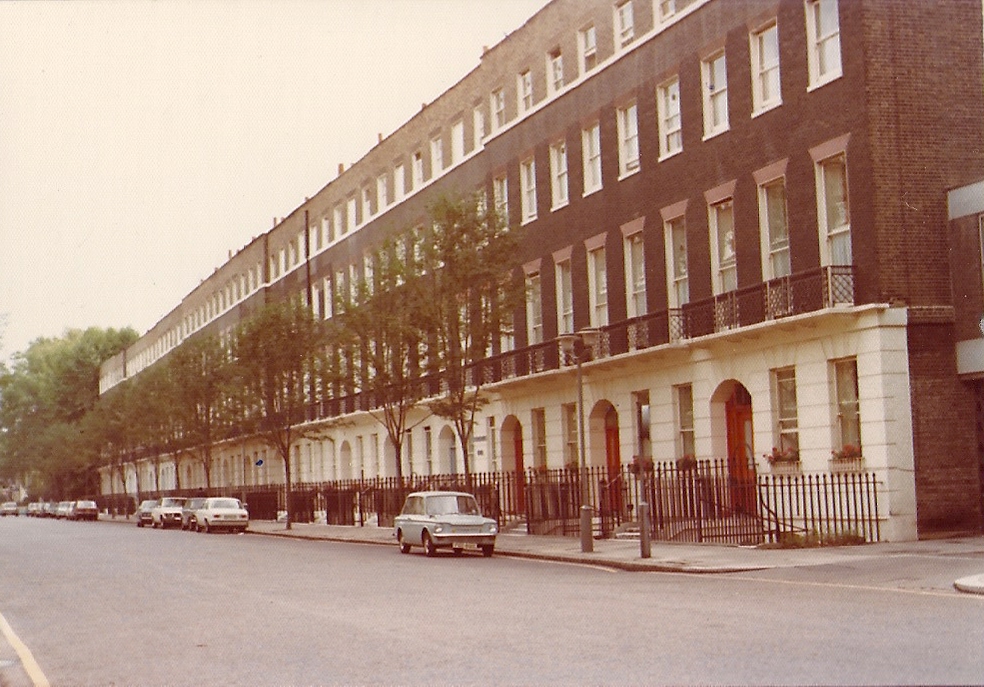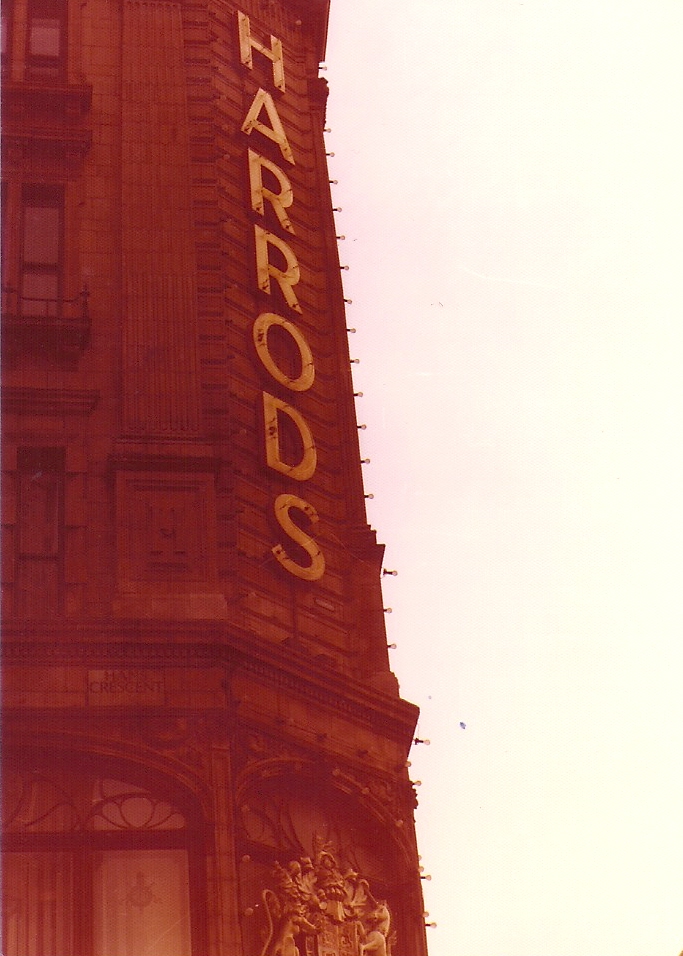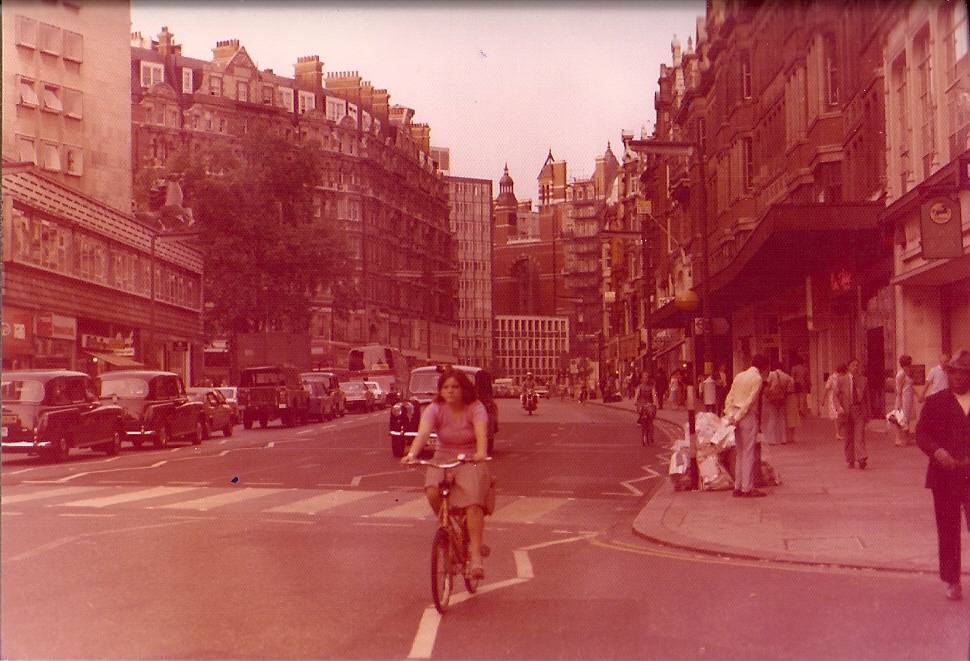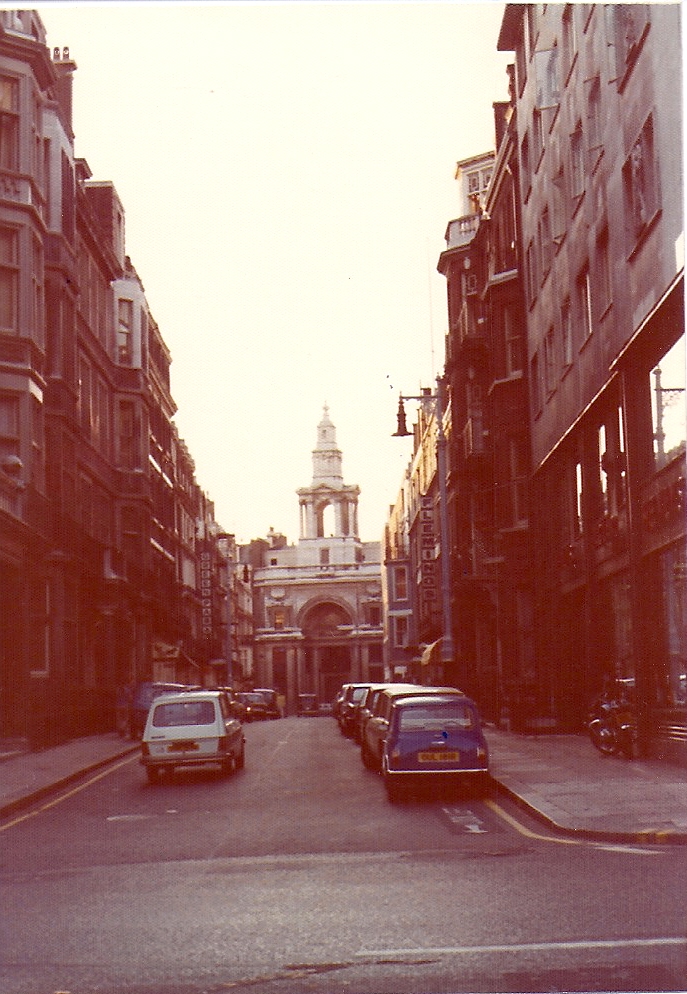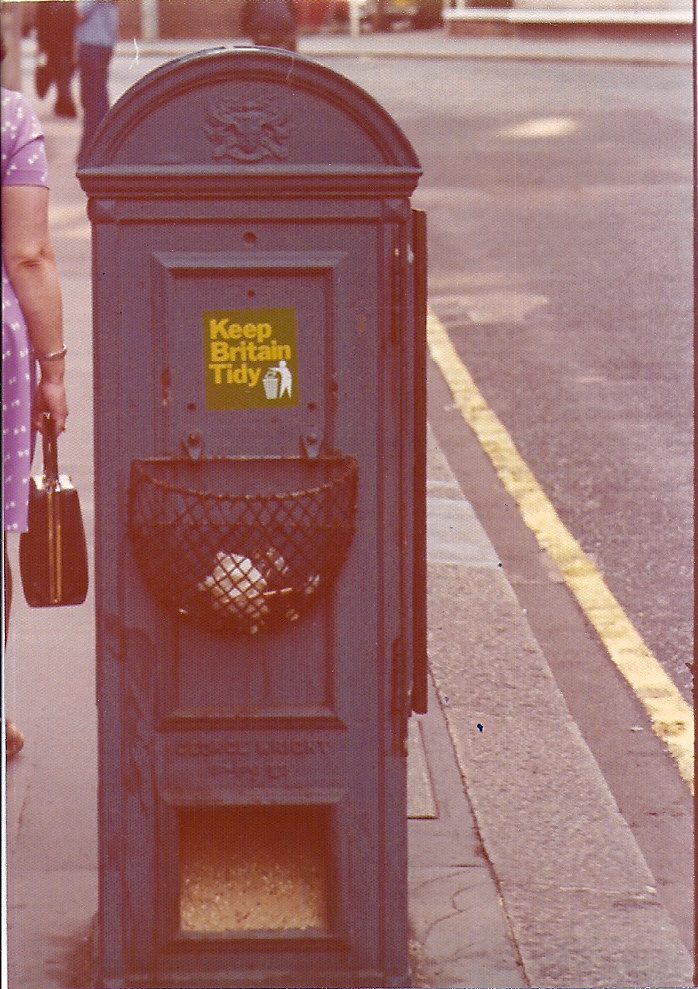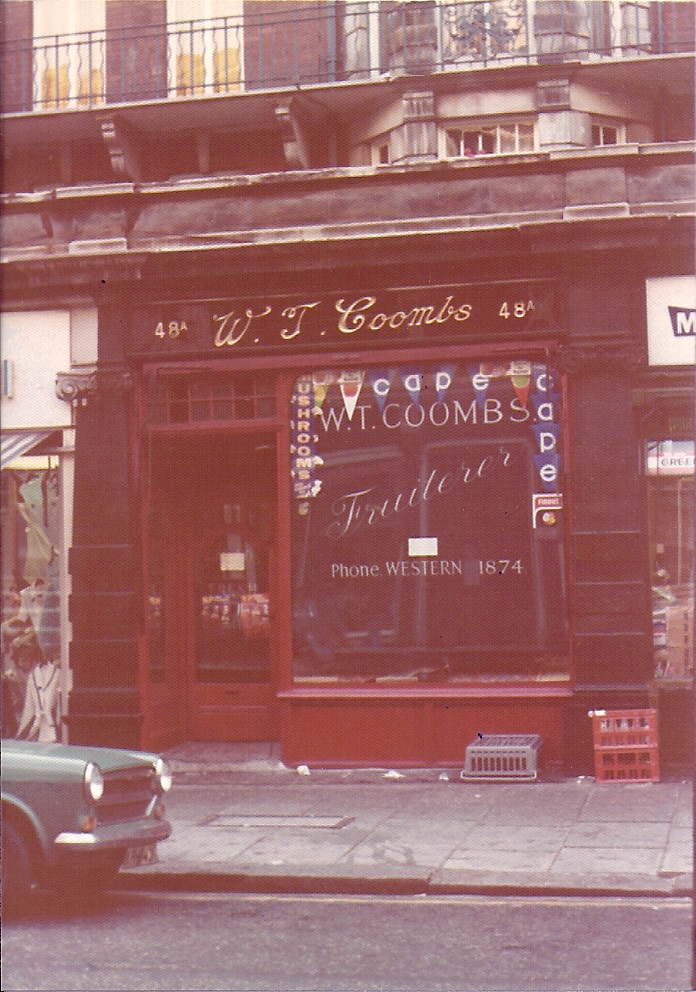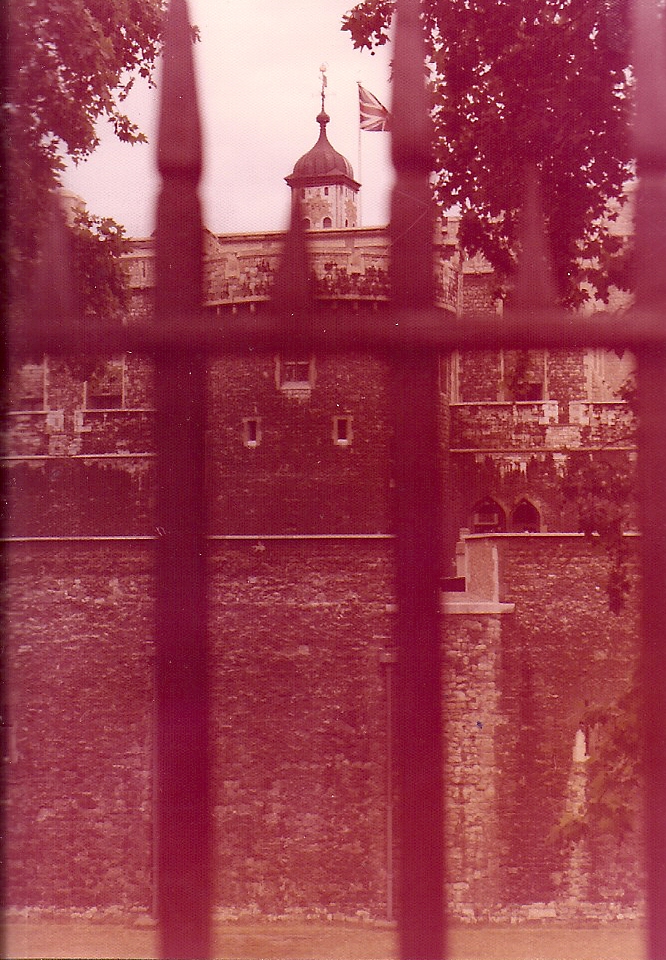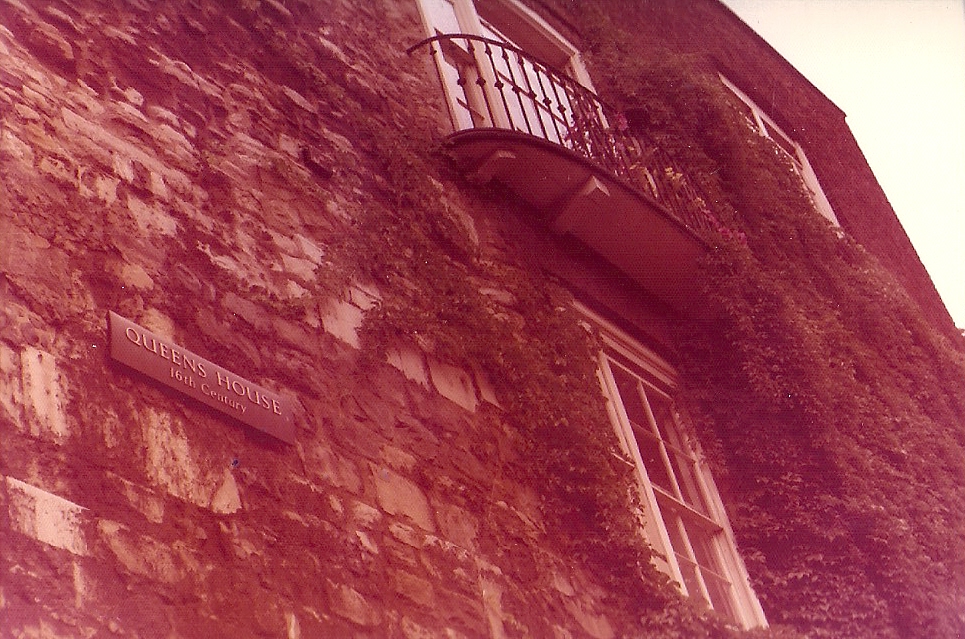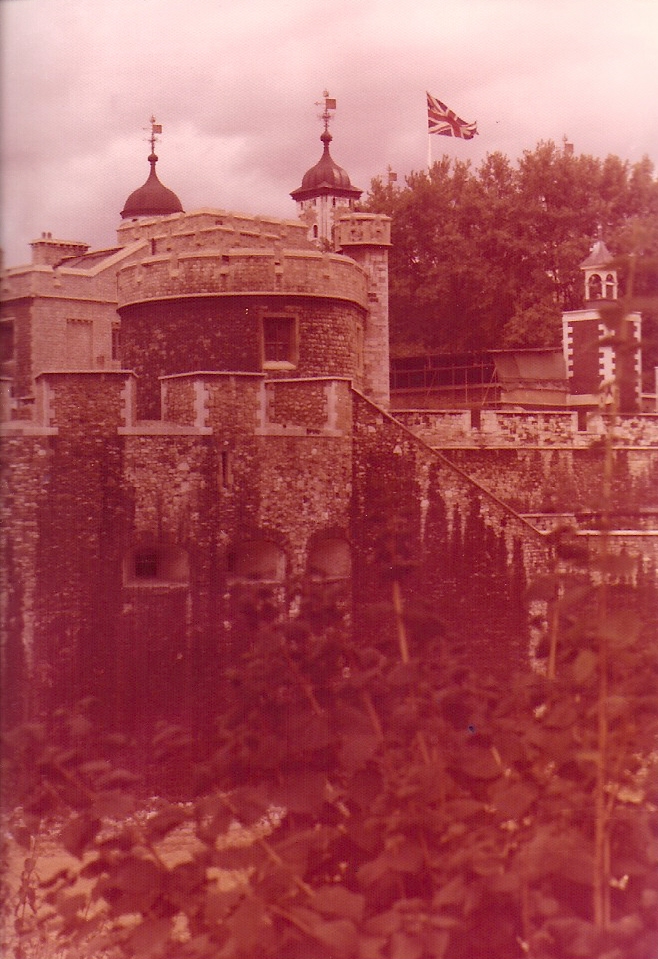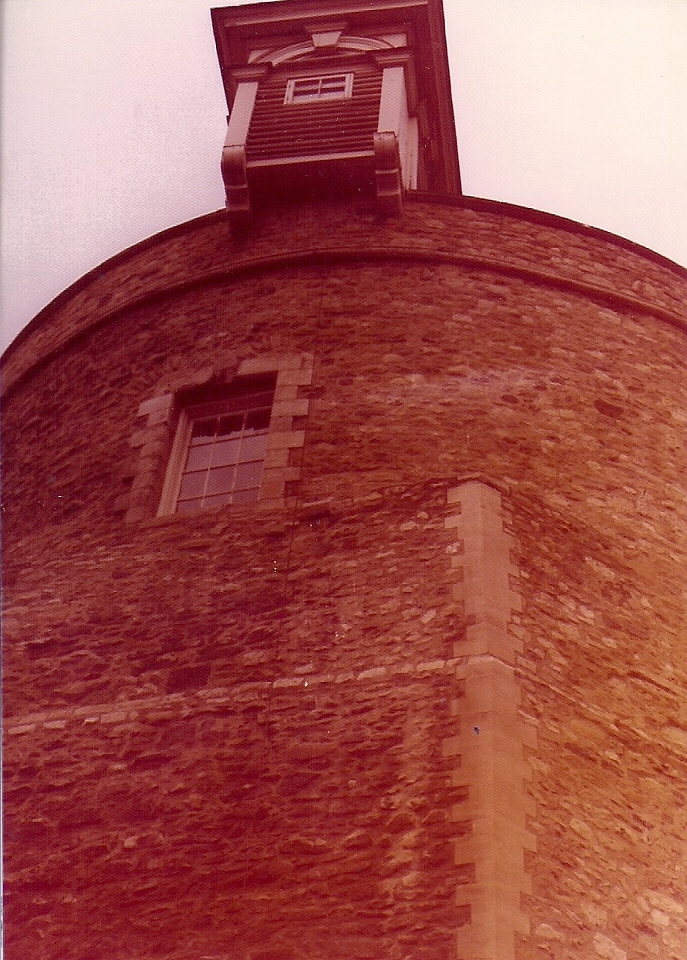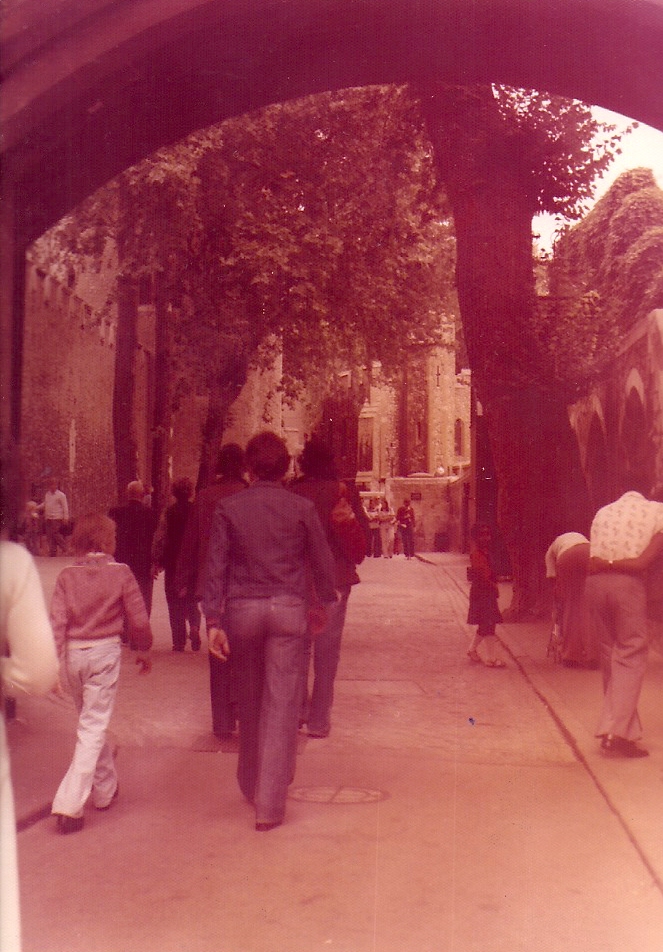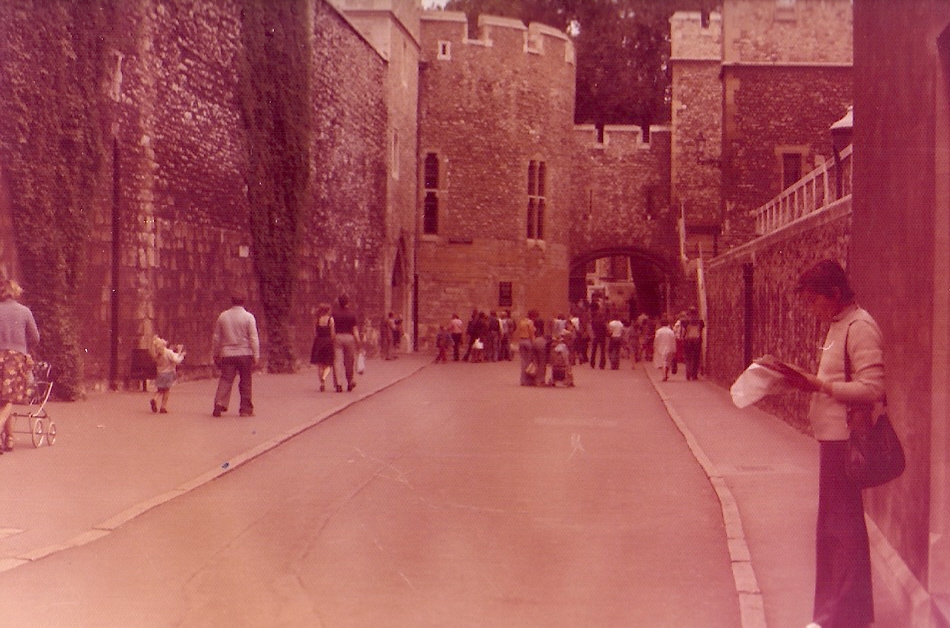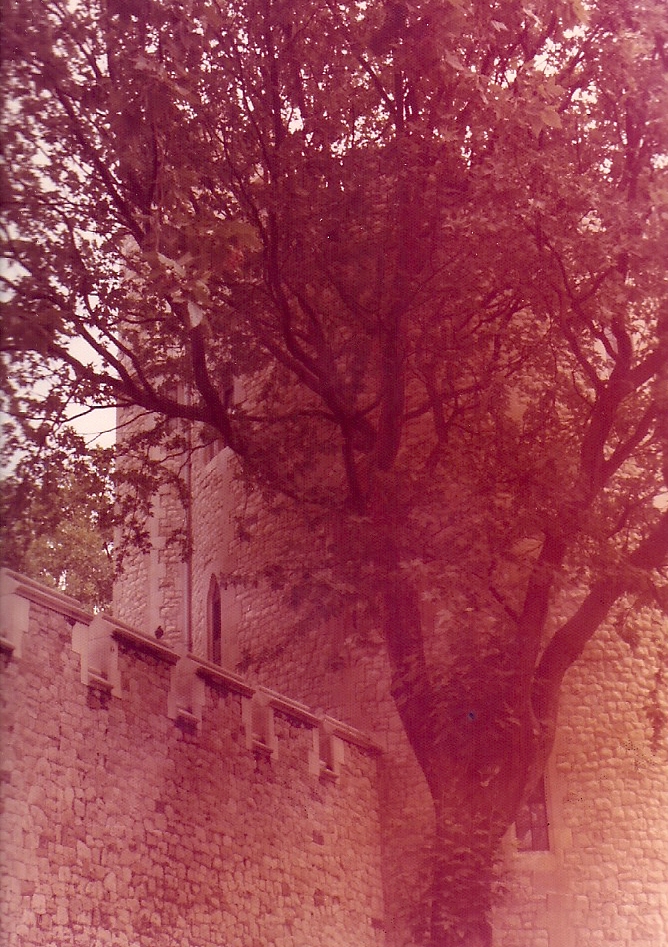My favorite places were the streets of London – the streets of any city are my favorite places – photographing the people and buildings that didn’t necessarily have any historical significance like the gypsy selling flowers at Portobello Road or eating lunch at Woolworth’s.
One day, Portobello Road will deserve a blog all its own from me. The crowds – filled with the kind of people you would find on Broadway and Times Square – the smells, the sounds, the colors, and the over abundance of stuff for sale would set me off writing for days and days.
We went to Marks and Spencer and I bought a dress that I thought would be considered “mod” since it was from England. I bought a shirtwaist-type dress was in black and tan with stripes and short sleeves. Styles were changing by the middle 1970s. Women’s clothes were more tailored especially dresses and this dress had tailoring down to its buttons
I also bought Mary Quant make-up in cute pots. The label on the pot of blush called it “cheeky.” How “mod” was that?
http://www.fashion-era.com/2970s.htm
The City of Westminster is home to Baker Street among other famous addresses and took its name from the builder William Baker who laid the street out in the 1700s. The detective Sherlock Holmes lived at the fictional address 221 B Baker Street.
http://www.londontown.com/LondonStreets/baker_street
Portobello Road is the world’s largest antiques market with over 1000 dealers. www.portobelloroad.co.uk
Located on Brompton Road in Knightsbridge,Harrods is the biggest department store in Europe.
www.harrods.com
Piccadilly Circus is a round open public space in London’s West End in the City of Westminster. Piccadilly Circus connect Regent Street with Piccadilly Street. Piccadilly Circus is close to entertainment areas in the West End and links to the theatres on Shaftesbury Avenue. www.piccadillycircus.com
Madame Tussaud’s Wax Museum: Founded by Marie Tussaud, a wax sculptor, the wax museum houses the likenesses of many famous people. www.madametussauds.com
No. 10 Downing Street houses the headquarters of the Executive Arm of the British government and is the official residence of the Prime Minister and the office of the First Lord of the Treasury. The building is over 300 years old and has about 100 rooms. No. 10 is close to St. James Park, the Palace of Westminster and Buckingham Palace. www.gov.uk//history/10-downing-street
The Tower of London and “London Bridge” are two of the most famous symbols of London. The Tower of London houses the ghosts of past prisoners – Anne Boleyn, Guy Fawkes and Sir Walter Raleigh among others – and the crown jewels. The jewels, of course, were beautiful and included the Imperial State Crown which the Queen uses at the State Opening of Parliament and St. Edward’s Crown which the King or Queen wears during the coronation (when there is one).
www.hrp.org.uk/CrownJewels/abriefhistory
www.history.com/news/history-lists/6-famous-prisoners-of-the-tower-of-london
What every tourist thinks of as the London Bridge is really the Tower Bridge. This is the bridge that tourists photograph and mistakenly call the London Bridge. Built in 1894 to look like a medieval bridge the Tower Bridge is on the way to the Tower of London.
The London Bridge was built in 1973 and spans the Thames River like the Tower Bridge.
www.freetoursby foot.com/London-bridge-tower-bridge
When I took my photos of London Tower and Tower Bridge, I had no way of know that the film would be over-exposed when I developed the film back home. I was upset when I first saw them but now I’ m glad they are the way they are. When I look at them now, I think how the photos set a mood for the places I photographed.

